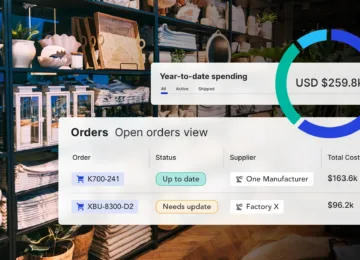As the global COVID-19 pandemic stretched through 2020, perhaps no industry was impacted more than the live events and tradeshow sector. The lack of global industry events left many businesses and suppliers searching for a way to replace their most significant source of business development at a time when finding new prospects was as difficult as ever.
In an attempt to maintain normalcy, many events have gone virtual to offer both attendees and vendors alike the opportunity to still network and make business connections. While this may seem like a solid alternative, the reality is that virtual events just are not an ideal platform to replace traditional in-person trade show business development efforts. Sure, the idea of saving money on travel and booth setup may sound like a value-add, but several challenges will make securing a return on that investment a difficult one.
Less engaged attendees
One of the biggest draws for a supplier to invest in a traditional in-person trade show is access to the audience. With the time and money resources required to attend, it’s logical to assume that any attendee willing to pay for travel and attendance is also a prospect who is there looking to buy. Attendees know they only have a set amount of time to walk the show floor and visit each booth, or else missing the opportunity to connect. It is the ultimate business trip, and paying attendees want to get their money’s worth as well.
By going virtual, an attendee’s urgency to start conversations with new suppliers is drastically reduced as travel and hotel costs are now eliminated. The costs to attend plummet to just an online ticket, which can often be free. In addition, the event itself – a long live-stream of video discussions and panels – can easily be set to play in the background of more pressing work. These less engaged attendees have very little value to suppliers seeking new business.
Increased vendor competition
In-person trade shows have caps on how many vendors can participate due to venue space restrictions. When tradeshows go virtual, the “showroom floor” becomes infinite, creating exponentially more competition for visibility. Sponsorships also lose value because of the sheer volume of vendor participants. Sure, paying to be promoted at the top of a vendor list is nice but it’s not the same as having the biggest booth and prime location all attendees must walk by to enter the show floor. As a supplier, you lose the unique advantage you may have with in-booth marketing like giveaways, demonstrations, and visuals, as well as the opportunity to physically draw in passersby through personality and conversation. A virtual booth is no different than your own website – a stationary online information source that you hope prospects come to for more information.
Limited time slots with more potential interruptions
For many organizations, exhibiting at a virtual trade show will be their first ever. The potential for technical glitches, lag times in connectivity, and issues with breakout rooms in a new virtual environment is more likely to occur, leaving much to be desired for the vendors shelling out the money to market themselves. And unlike an in-person show, when something is amiss, you can’t just walk up to event staff to have it remedied. Your virtual booth could go down, audio issues may occur during a panel, or any branding assets could render incorrectly on the wrong sized screen, and you’re left to send an email and hope someone can jump in to fix it. While virtual events may improve in the future, spending time and resources on them now may prove challenging for their desired ROI.
A winning alternative to virtual trade shows
If in-person trade shows aren’t coming back soon and virtual events aren’t the answer, how can suppliers continue to build their new business pipeline? Anvyl’s Supplier Marketplace provides a winning alternative for business development opportunities for both suppliers and brands. Suppliers that have joined the Marketplace receive:
- More qualified customers: Brands who use Anvyl are pre-qualified and more likely to purchase repeat inventory in larger volumes
- A streamlined workflow: Some virtual trade shows now require attendees and sponsors to join through a custom portal to have client meetings instead of using what is easiest for everyone’s workflow. With another calendar to set-up and track, Anvyl provides a much easier solution that lets users communicate either on or off-platform. Both customers and suppliers of Anvyl are trained on the same system, making it easier to both request and find information when it’s needed. The resources required to support Anvyl prospects are drastically lower than leads through other channels, as the process is standardized within our workflow.
- Shorter sales cycles: RFQs and POs can be collaborated on and issued from the same platform with a single click.
The platform already has $1B in transacted revenue each year between brands and manufacturers, with a projection of $5B in transacted revenue in 2021. To start closing new business directly through the platform, get started by creating your supplier profile page today.



